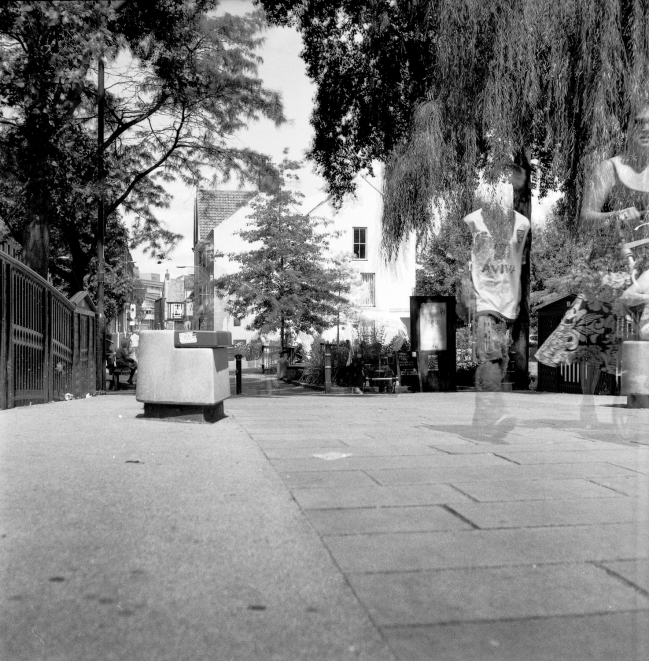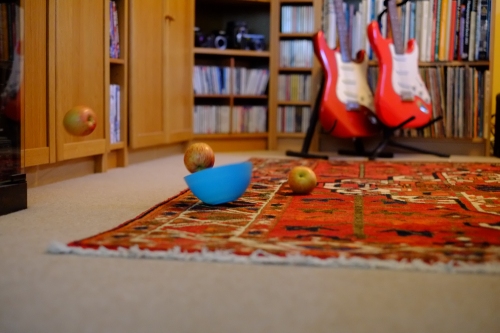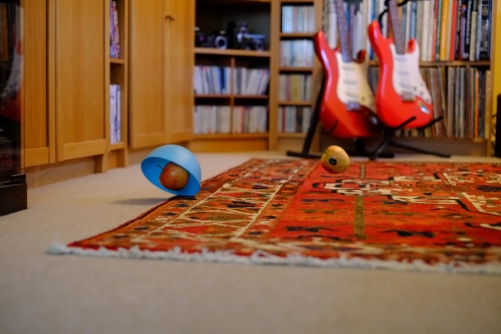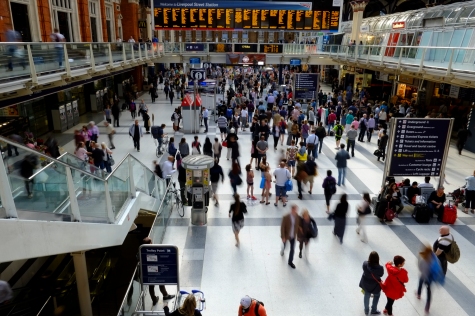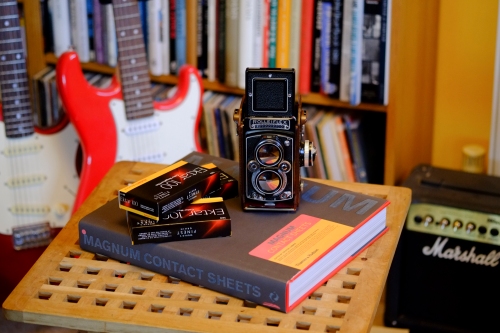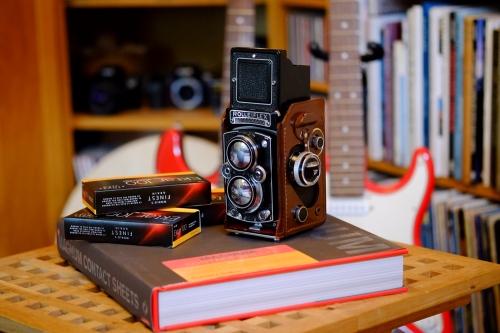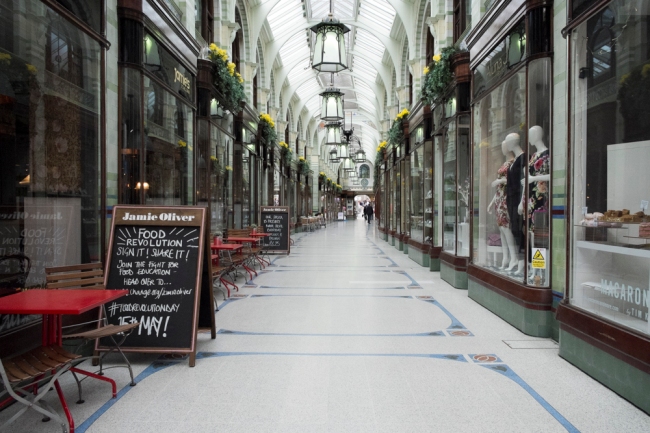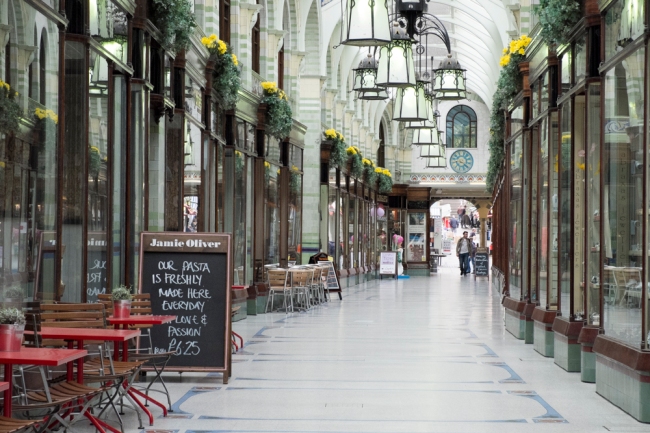Start by doing your own research into some of the artists discussed above.
Then, using slow shutter speeds, the multiple exposure function, or another
technique inspired by the examples above, try to record the trace of movement
within the frame. You can be as experimental as you like. Add a selection of shots
together with relevant shooting data and a description of your process (how you
captured the shots) to your learning log.
Some reflections on the work of Sugimoto, Vanvolsem and Woodman
Before I started to make images for this part of the course I looked at the work of a number of artists referred to in the course text. I looked a at number but in this blog entry I focus on the three whose work most influenced the images I made in response to exercise 3.2.
Hiroshi Sugimoto
Firstly I was intrigued by Hiroshi Sugimoto’s long exposure shot taken within a cinema. There is an intriguing dichotomy between the darkness of the cinema theatre, a place that needs to be dark in order to enjoy the projected images on the screen. At 24 frames a second the individual frames create a moving image that although bright in some cases the theatre still remains relatively dark throughout the film. Sugimoto challenges this though and his long collects the light from each on of this frames and in effects starts to add them together. The summative effect of this addition is that the movie theatre looks completely illuminated . The cinema screen appears to be come a source of illumination lighting up the architecture of cinema theatre in a strange light. this light reveals the architecture of the space but of course does not show any of the occupants, the long shutter speed failing to capture evidence of humans.
This whole approach resonated with me. Reading Sugimoto’s Wikipedia page the notion of capturing time is suggested. I must admit to thinking differently to this about the work. If an image captured in a thousandth of second in more traditional approaches to photograph is recording a short moment in time, the Sugimoto, is recording a collection of these, a genuine ‘durational space’ far in excess of the more general use of the medium. The work offer some insight i believe to the idea of time and space. I am intrigued by the use of longer shutter release times and a mechanism to examine time. Some of the images I will post in this section are about exploring time and who we perceive it. In deed the camera it could be argued might be a tool to explore time and travel within it, all be it visually and not literally!!
Copyright Hiroshi Sugimoto
If a film is 90 minutes long then the theatre will be illuminated by the glow from 129,600 individual frames and the light they give out!
Maarteen Vanvolsem
Looking on-line at the work of Maarteen Vanvolsem at the online Kussneers gallery I was very interested again in the notions of the camera as a device to record time. Vanvolsem suggested that the technology of the camera reveals something the eye cannot see, indeed he asks the question:
“Do images, built in time by the movement of the film, give us an image of time?”
This work not only utilises slow shutter speeds but also the motion of the camera, suggesting that vin some way these two separate controls reveal something to us about the nature of time itself. Although different to the work of Sugimoto, Vanvolsem is asking I believe a fundamentals questions about the mediums ability to reveal something that the human eye cannot see.
Francesca Woodman
A further artist whose work I explored for this part of the course was Francesca Woodman. Clearly a troubled but very talented photographer I found her work strangely compelling. Her self portraits and the portraits and studies of others contained for me some strong and recurring motifs. the first of these was the sometimes derelict and decaying backdrop to her images. Woodman use of 6×6 monochrome was also a further theme. the most engaging aspect of her work however were the images where a slow shutter speed had been used and the subject, sometimes her self had moved during the exposure. again the use of the camera to see something of time that the human eye is unable to capture was something that I thought I needed to explore in my own work.
Some of her work has a dance like quality and I was reminded of the early pioneers of the mediums use of slow shutter to capture what is ordinarily hidden from the eye. There is also a drama to the work, perhaps created by the movement captured in some of the slow shutter images. Of greatest interest to me though in this work was the deep melancholy that appears as a theme. I am uncertain whether this is intentional or whether subconsciously I see this in the work knowing that Woodman had complex mental health issues and committed suicide at a relatively young age. A talent lost and a photographer who perhaps never reached the pinnacle of the success she could have achieved.
Copyright the estate of Francesca Woodman
Of all of the photographers work I looked at it was Woodman’s influence that I found most engaging, and this work set me on a track to make some slow shutter, multiple exposed photographs.
References
http://kusseneerscom.webhosting.be/portfolio_page/maarten-vanvolsem/
http://www.gerrybadger.com/francesca-woodman/
Exercise Images
In these firs set of images i wanted to create a contrast between the sharpness of the scene but the blur from people and object in motion. I used a wide angle lens, a small aperture and slow shutter speed. the images were hand held. i am pleased with the juxtaposition of motion in a scene that is on the whole very sharp. the effect creates a sense of dynamism and records a longer moment in time than a usual image. these are all be it short ‘durational spaces’
 Omnibus in Motion- 18mm F22 at 1/25
Omnibus in Motion- 18mm F22 at 1/25 Street Crossing- 18mm F22 at 1/20
Street Crossing- 18mm F22 at 1/20 Street Walkers- 18mm F22 at 1/25
Street Walkers- 18mm F22 at 1/25
The Durational Space-Movement in time
Having experimented taking the images above and reflecting on the work of Vanvolsem I also decide to experiment with slow shutter speeds and camera motion. The idea was not only to capture a long moment in time but also to scan the camera across a sen in the process. In my own way I was trying to record time in the way Vanvolsem describes in much of his work. The final images have a surreal and abstract quality but they also say something about time.
 Bridge 1- 18mm f22 at 1/9 sec
Bridge 1- 18mm f22 at 1/9 sec Bridge 2- 18mm f22 at 1/8 sec
Bridge 2- 18mm f22 at 1/8 sec Bridge 3- 18mm f22 at 1/6 sec
Bridge 3- 18mm f22 at 1/6 sec
The durational space explored further through multiple exposures
I wanted to explore the notion of the camera controlling and representing time in different ways further and with this in mind felt i needed to use a film camera capable of multiple exposures to bring to a conclusion this set of exercises.
To do this I used a 1959 Rolleicord Va II roll film camera and 120 monochrome film. The camera has an excellent multiple exposure feature a very quiet shutter and would allow me create a range of effects in the camera. I used Shanghai GP3 120 100 ISO film and processed it in Ilford Ilfotec LC29 at 1-29 dilution. I metered (incident reading) for each scene and then reduced the exposures by two stops to try an reduce the risk of the film getting too over exposed during the multiple exposures. I shot three images on each negative and used an aperture of f8 and a shutter speed of 1/8 second. The resulting negatives were scanned and sharpened slightly as I do with all scanned negs.
I wasn’t completely satisfied with the quality of the final images but this is an approach that I am going to explore further. Again I think i have created a range of durational spaces through the use of slow shutter and multiple exposures.
All of the above images were produced in camera and with minimal processing. as stated above this is an approach that I will explore further in my own work and the work for the course.







